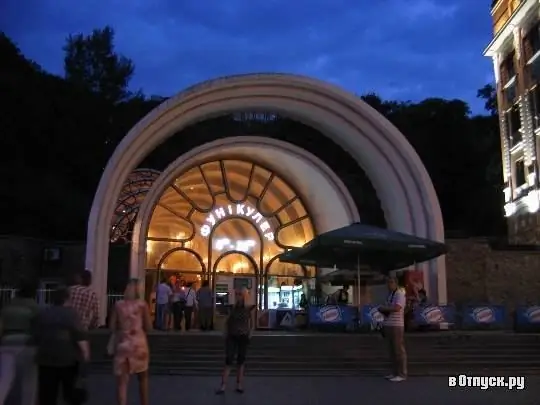
Description of the attraction
The Kiev funicular, which is one of the symbols of Kiev, is a rather exotic and uncommon mode of transport and, at the same time, an architectural monument of Kiev of the 19th century.
Until the beginning of the 20th century, people got to the Upper Town from Podil using equipped wooden staircases. In the process of development of the urban transport system, the issue of fast travel to Vladimirskaya Gorka was impossible to avoid. Concepts for such a transport appeared constantly - for example, there was an idea of forming a mechanical lift near St. Andrew's Church. Due to the narrowness and steepness of the Andreevsky descent at the end of the 19th century, the tram did not run on it, and the Upper Town was not connected with Podol. The city authorities made a decision "on the device of a separate mechanical lift in a place that is not occupied by the street." Reconstruction works connecting Mikhailovskaya Gora and Borichevy Tok were carried out in 1903 and were completed in the spring. The "Electric Cable Car" cost 230,000 rubles for the Belgian joint-stock company.
The idea of the lift belongs to the "engineer in the square", as the Minister of Railways S. Witte called it, Arthur Abrahamson. The authorship of this extraordinary project belongs to the engineers N. K. Pyatnitsky and N. I. Baryshnikov. The initial project provided for a lift length of 250 m, but the impossibility of demolishing one lower private house led to the limitation of construction to 200 m of the "cable car". The equipment of the funicular and its carriages was carried out by Swiss craftsmen, who had extensive experience in this matter. At the beginning of May 1905, a test run of the funicular for builders and mechanics took place. And immediately the operation and transportation of passengers began. In 1928, an accident occurred, during which people were not injured, but the cars were completely destroyed and they had to be recreated from scratch. The new reconstruction of the Kiev funicular took place in the mid-80s of the last century.






